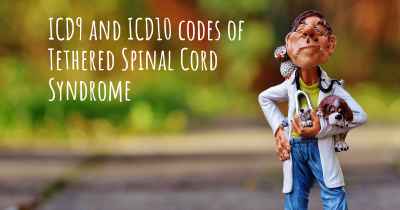What is the history of Tethered Spinal Cord Syndrome?
When was Tethered Spinal Cord Syndrome discovered? What is the story of this discovery? Was it coincidence or not?

Tethered Spinal Cord Syndrome: A Historical Overview
Tethered Spinal Cord Syndrome (TSCS) is a neurological disorder characterized by an abnormal attachment of the spinal cord to surrounding tissues, restricting its movement. This condition can lead to a variety of symptoms and complications, making it crucial to understand its history and development.
Early Observations and Recognition
The first documented cases resembling TSCS date back to the late 19th century. In 1887, German neurologist Hermann Oppenheim described a condition called "spina bifida occulta" in which the spinal cord appeared to be abnormally fixed. However, it wasn't until the mid-20th century that the term "tethered spinal cord" was coined.
Advancements in Diagnosis and Understanding
In the 1950s, Dr. Russell A. Hibbs, an American orthopedic surgeon, made significant contributions to the understanding of TSCS. He recognized that certain spinal abnormalities, such as spina bifida, could lead to tethering of the spinal cord. Dr. Hibbs also developed surgical techniques to address these conditions, laying the foundation for future advancements.
Over the following decades, medical imaging technologies, such as magnetic resonance imaging (MRI), revolutionized the diagnosis and understanding of TSCS. MRI allowed for detailed visualization of the spinal cord and surrounding structures, enabling clinicians to identify tethering more accurately.
Emergence of Surgical Interventions
During the 1970s and 1980s, neurosurgeons began to explore surgical interventions for TSCS. Dr. John M. Tew, an American neurosurgeon, played a pivotal role in developing techniques to release the tethered spinal cord. His work focused on untethering the spinal cord from the surrounding tissues, relieving tension and restoring normal function.
As surgical techniques evolved, so did our understanding of the underlying causes of TSCS. It became evident that various conditions, including spina bifida, lipomyelomeningocele, and spinal cord tumors, could contribute to tethering. This knowledge allowed for more targeted interventions and improved patient outcomes.
Refinement of Treatment Approaches
In the late 20th century, advancements in microsurgery and minimally invasive techniques further refined the treatment of TSCS. These approaches aimed to minimize tissue damage, reduce postoperative complications, and enhance patient recovery.
Additionally, multidisciplinary collaboration between neurosurgeons, orthopedic surgeons, urologists, and other specialists became crucial in managing the complex nature of TSCS. This holistic approach ensured comprehensive care and improved long-term outcomes for patients.
Ongoing Research and Future Directions
Today, research continues to deepen our understanding of TSCS and refine treatment strategies. Scientists are investigating the genetic and molecular factors that contribute to tethering, which may lead to targeted therapies in the future.
Furthermore, advancements in neuroimaging techniques, such as functional MRI and diffusion tensor imaging, hold promise for better preoperative planning and assessment of surgical outcomes. These technologies provide valuable insights into the functional connectivity and integrity of the spinal cord, aiding in decision-making and optimizing patient care.
Conclusion
Tethered Spinal Cord Syndrome has a rich history of medical observations, surgical advancements, and multidisciplinary collaboration. From its early recognition to the development of sophisticated surgical techniques, our understanding of TSCS has significantly evolved. Ongoing research and technological innovations continue to shape the future of diagnosis, treatment, and ultimately, the lives of individuals affected by this complex neurological condition.
Posted Sep 14, 2017 by Alison 2000








